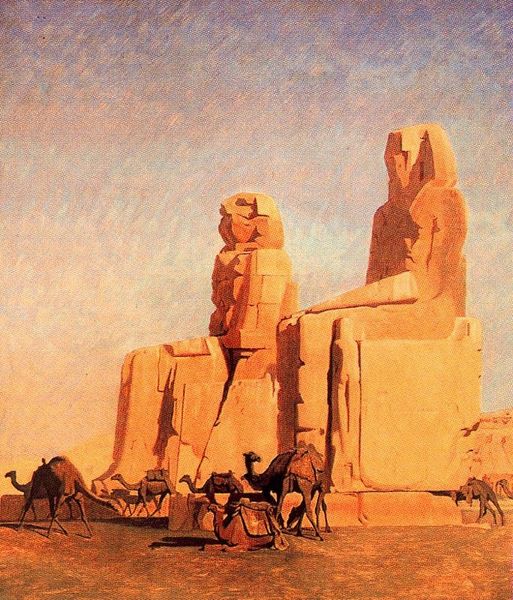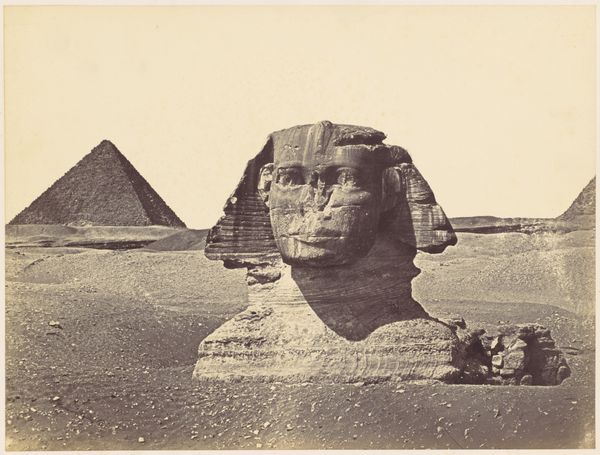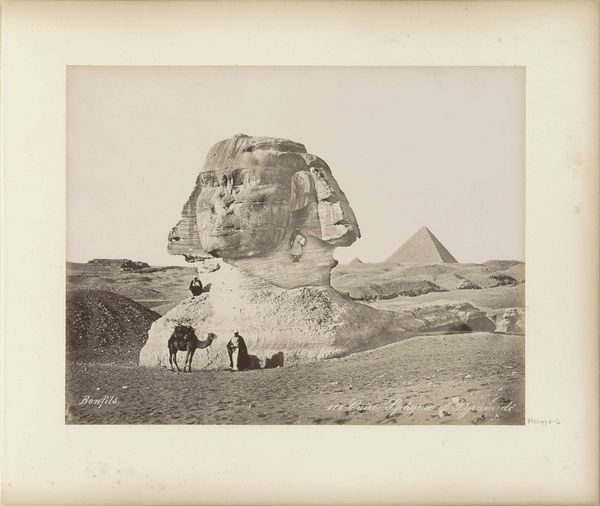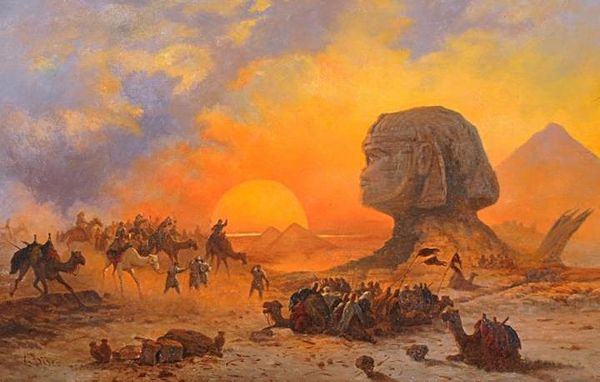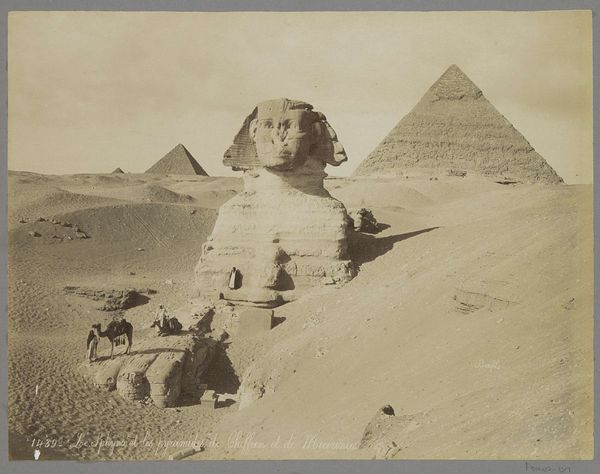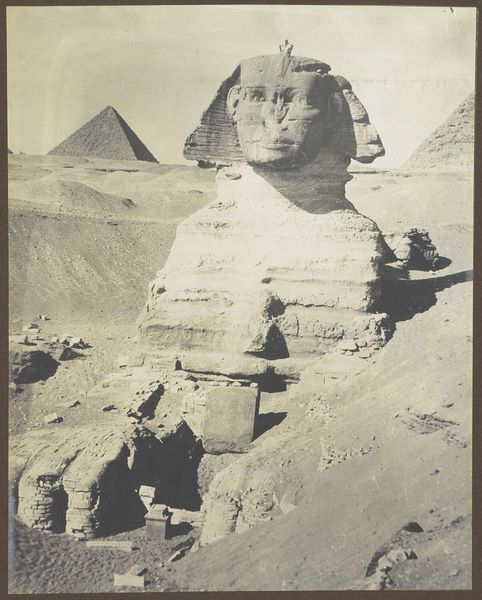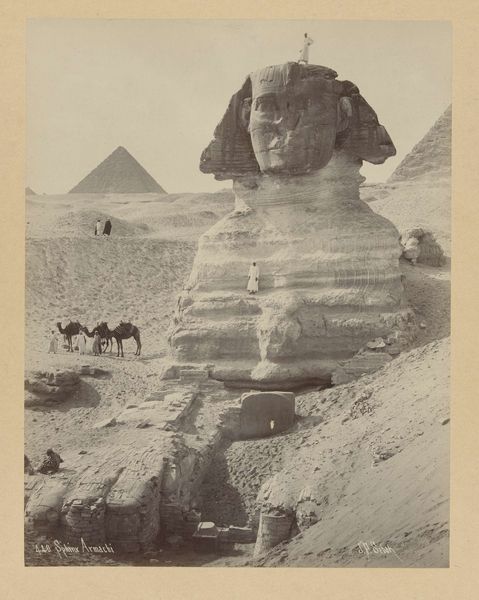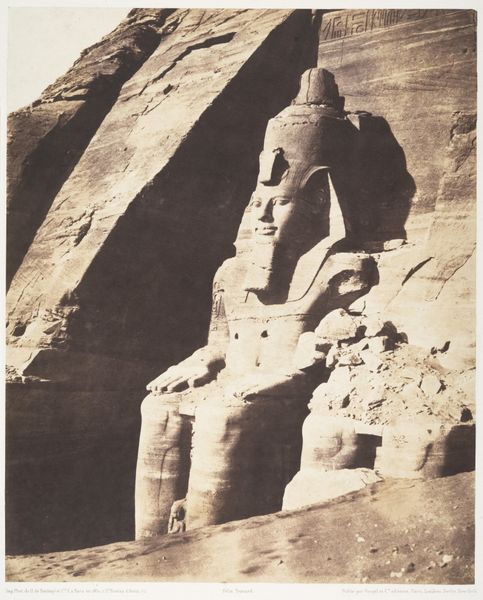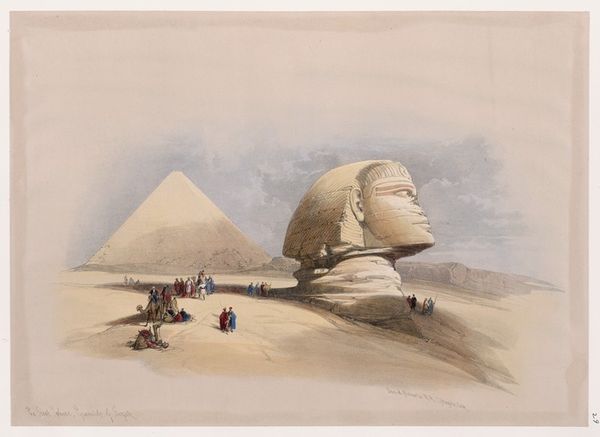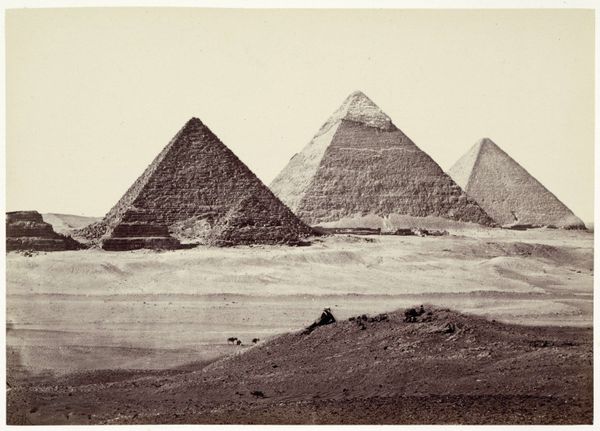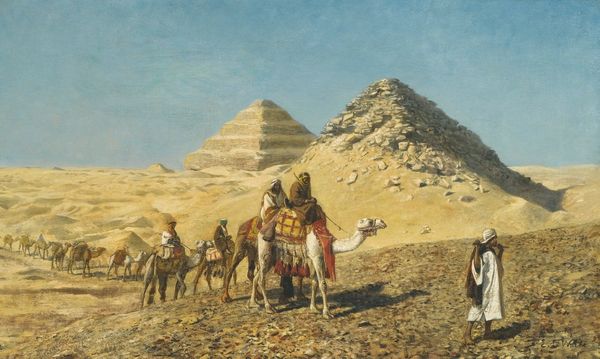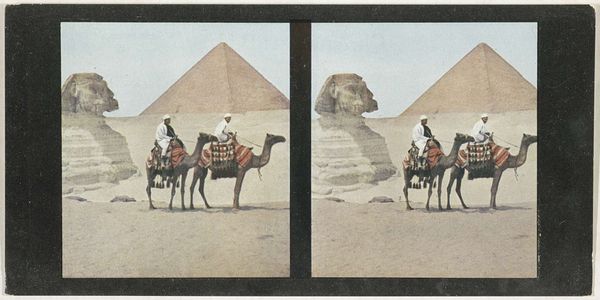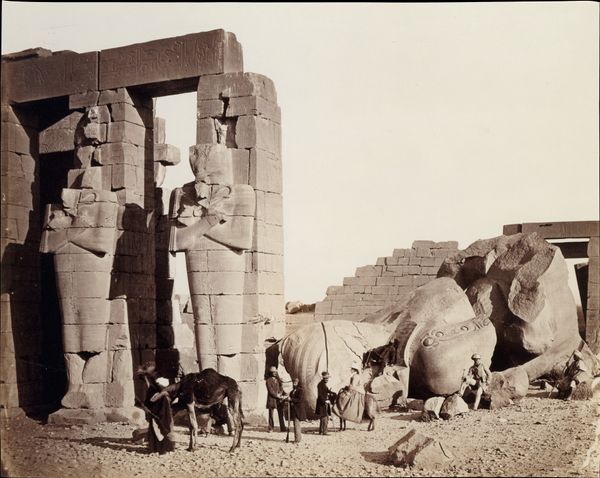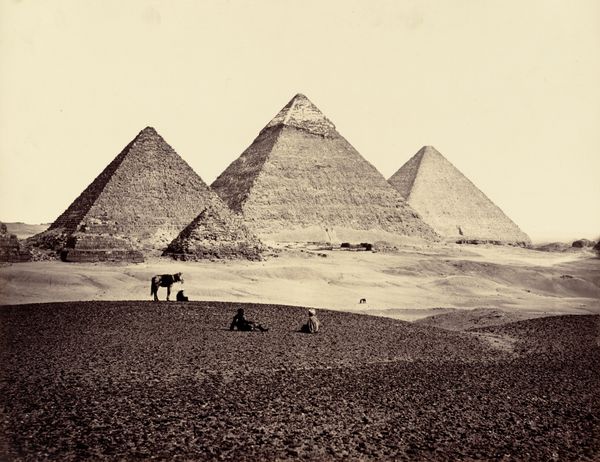
Dimensions: 101.9 x 61.6 cm
Copyright: Public domain
Editor: So, this is Jean-Léon Gérôme's "Bonaparte Before the Sphinx," painted in 1868 using oil paints. It’s located at Hearst Castle, which seems like an interesting choice, given the subject matter! The overall mood feels so… staged. What do you see in this piece, from your perspective? Curator: The 'staging', as you call it, is exactly the point! Gérôme, working within the Orientalist tradition, presents Bonaparte as a figure appropriating and almost claiming ownership over ancient Egyptian history. Consider the context: this painting emerges during a period of intense European colonial expansion. How does the scale of Bonaparte compare to the Sphinx? Editor: He’s tiny! It makes the Sphinx seem even more imposing. But what's interesting is that the inclusion of Bonaparte almost makes it seem like the painting isn't about the Sphinx at all... but rather, it serves as a way for him to be the focus? Curator: Precisely! It's about the visual power dynamic. The painting uses the grandeur of the Sphinx to amplify Bonaparte's image, linking him to this timeless, powerful symbol. It subtly reinforces the narrative of European dominance, placing Bonaparte, and by extension, France, within a historical lineage of greatness and conquest. But, what do you make of its location, at the Hearst Castle? Editor: Well, knowing the history of Hearst Castle now adds another layer to the meaning. A wealthy American industrialist collected European art depicting historical conquests, literally acquiring those images and relocating them into his own castle. So, the layers of appropriation pile up! Curator: Indeed. It reveals how art not only reflects historical power structures, but can actively participate in their perpetuation. Understanding this dynamic gives us a sharper perspective on the role of museums and private collections in shaping our understanding of the past. Editor: I hadn't thought about the role of display itself. Seeing it as an active element has shifted how I interpret the work and the context it exists in today!
Comments
No comments
Be the first to comment and join the conversation on the ultimate creative platform.
